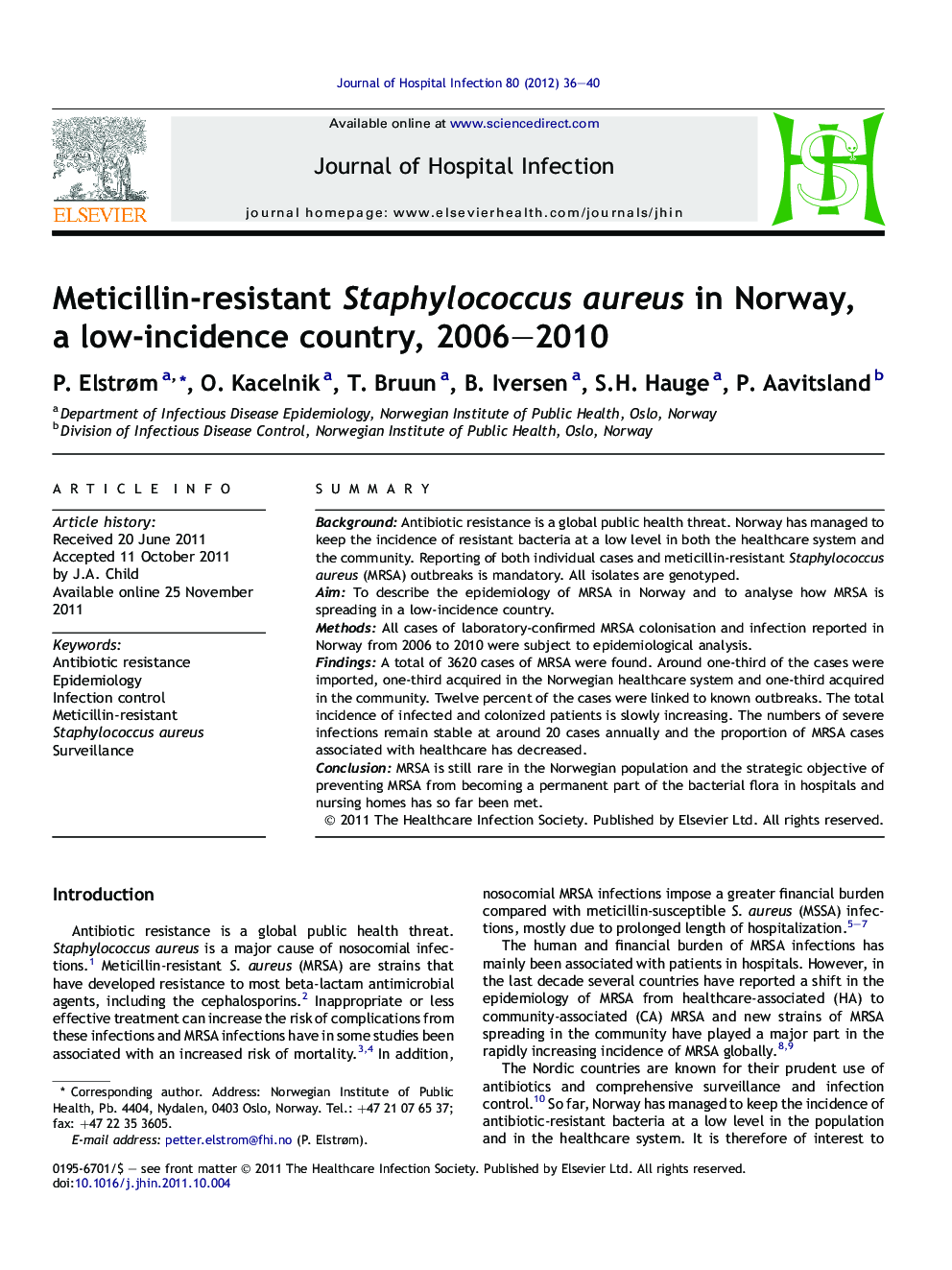| Article ID | Journal | Published Year | Pages | File Type |
|---|---|---|---|---|
| 3372025 | Journal of Hospital Infection | 2012 | 5 Pages |
SummaryBackgroundAntibiotic resistance is a global public health threat. Norway has managed to keep the incidence of resistant bacteria at a low level in both the healthcare system and the community. Reporting of both individual cases and meticillin-resistant Staphylococcus aureus (MRSA) outbreaks is mandatory. All isolates are genotyped.AimTo describe the epidemiology of MRSA in Norway and to analyse how MRSA is spreading in a low-incidence country.MethodsAll cases of laboratory-confirmed MRSA colonisation and infection reported in Norway from 2006 to 2010 were subject to epidemiological analysis.FindingsA total of 3620 cases of MRSA were found. Around one-third of the cases were imported, one-third acquired in the Norwegian healthcare system and one-third acquired in the community. Twelve percent of the cases were linked to known outbreaks. The total incidence of infected and colonized patients is slowly increasing. The numbers of severe infections remain stable at around 20 cases annually and the proportion of MRSA cases associated with healthcare has decreased.ConclusionMRSA is still rare in the Norwegian population and the strategic objective of preventing MRSA from becoming a permanent part of the bacterial flora in hospitals and nursing homes has so far been met.
